This article may contain affiliate links. Please see our affiliate disclaimer in the footer menu for more information. Thank you for your support!
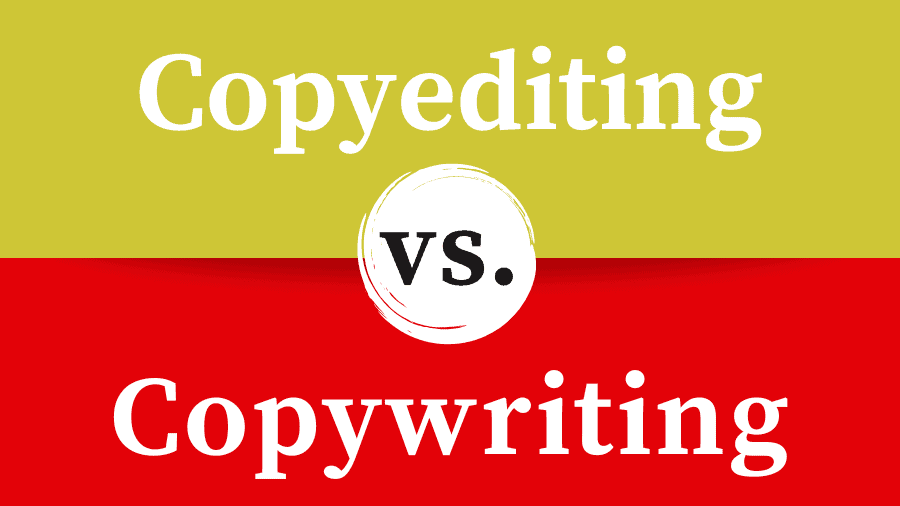
While copyediting and copywriting may appear similar, they each serve a distinct role in the creation of written content, commonly referred to as copy. To decipher the meaning of these words, take copy from the beginning of each, and put it at the end.
Copyediting = editing copy
Copywriting = writing copy
Specifically, copyediting involves improving writing by correcting minor errors and making it clear, concise, and consistent. Copywriting entails writing copy, typically to convince people to take a specific action (e.g., buy a good or service, become a subscriber, donate money).
Let’s see precisely what each process entails. We’ll also delve into the qualities of a good copy editor versus a good copywriter and see the earning potential in both professions.
Copyediting vs. Copywriting: How Are They Different?
Here’s an overview of the differences.
Copyediting vs. Copywriting
| Copyediting | Copywriting | |
|---|---|---|
| What Is It? | correcting text | creating text |
| Primary Purpose | makes the copy easier to read | creates gripping and convincing copy |
| Level of Creativity Required | low | high |
| Relevant Voice | typically an author’s voice | usually a company’s brand voice |
| Follows a Style Guide? | yes | ideally, yes (but not always) |
Copy editors need to know how to find and fix errors to enhance a text’s readability.
Copywriters need to be able to create persuasive prose to grab and keep people’s attention.
Now, let’s dive deeper into copyediting.
What Is Copyediting?
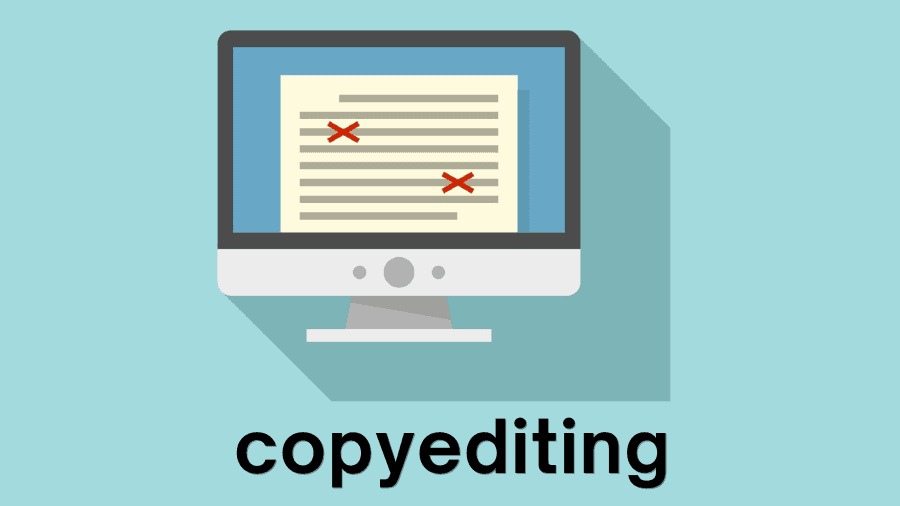
When people talk about copyediting, they often mention the five c’s: correctness, clarity, concision, consistency, and comprehensiveness.
Since copyediting is a multifaceted process, these five c words help us remember exactly what copy editors do.
A critical aspect of copyediting that isn’t always discussed is that copy editors need to use sound judgment. As they work on the five c’s, they need to focus on keeping the author’s voice intact.
The copy editor’s goal is to improve the writing, but they want to ensure the author’s personality shines through.
Explaining the 5 C’s of Copyediting
These five c’s are somewhat self-explanatory, but here’s a brief explanation.
1) Correctness means fixing punctuation, grammar, capitalization, spelling, and formatting errors. This also involves correcting improper word choices (bare vs. bear) and looking for omitted or repeated words.
2) Clarity involves removing ambiguities or awkward wording so the writing is easy to understand.
3) Concision means eliminating wordiness. As authors Strunk and White say in their brilliant book, The Elements of Style, “Make every word tell.”
4) Consistency ensures that the writing follows the appropriate style guide. These guides set parameters for numerous elements (e.g., hyphenation, punctuation, spelling, spacing) to make sure they stay the same throughout a text.
5) Comprehensiveness means ensuring the author hasn’t omitted any critical details that would lead to misunderstandings.
Examples of Documents a Copy Editor Works On
- book manuscripts
- blog posts
- magazine articles
- emails
- business documents
- user manuals
- product descriptions
- dissertations
- theses
- essays
- résumés and cover letters
- newsletters
Now let’s dive into the world of copywriting.
What Is Copywriting?
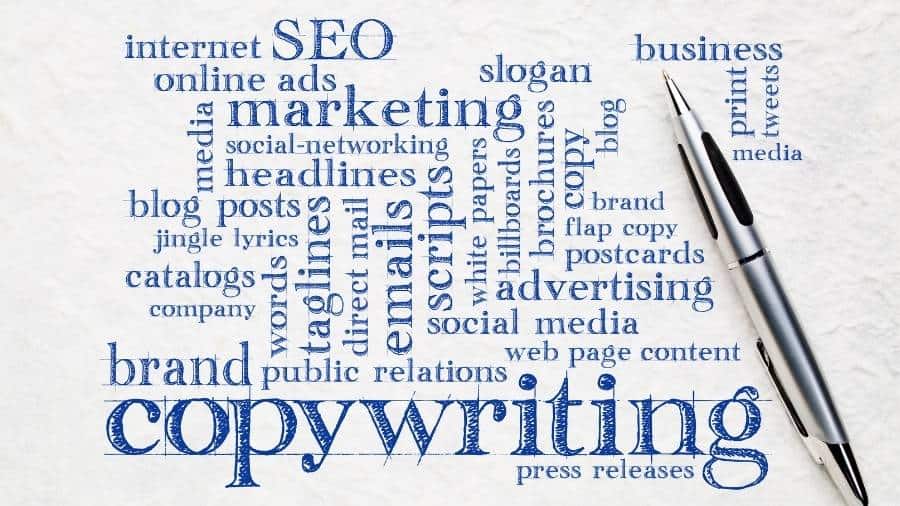
Copywriting is creating copy that’s usually intended to make someone do something (buy a product, subscribe to a service, donate money or time, etc.).
Copywriting is most often used to sell something.
Businesses and entrepreneurs hire copywriters to increase the chances that someone will spring for what they offer.
An adept copywriter will convince you that you need a certain something—like really, really need it. 😉 Your life will be easier, happier, more exciting (you name it) if you purchase that specific something.
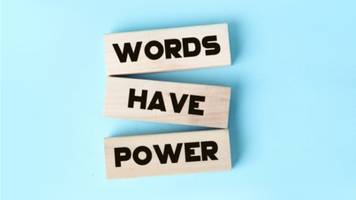
And what if you end up forking over your cash? Well, that copywriter did a great job! They did an especially fine job if this was a good or service you weren’t even considering in the first place. Whew! The power of persuasion!
We know that a copy editor needs to allow the writer’s voice to come through.
But what about a copywriter? They want a company’s brand voice to be evident.
Copy editors aim to accurately represent the unique voice of the business whose products and services they promote.
Examples of Documents a Copywriter Works On
- billboards
- flyers
- brochures
- scripts for commercials
- service descriptions
- product descriptions
- sales letters
- landing pages
- tag lines
- catalogs
- marketing emails
- newspaper and magazine ads
Now let’s uncover the characteristics that make competent copy editors and copywriters.
The Qualities of a Good Copy Editor vs. Copywriter
What qualities are needed to be a successful copy editor or copywriter?
You’ll see from the lists below that many of the same qualities are needed for either job. The last seven bullet points in both lists are identical.
What Are the Qualities of a Competent Copy Editor?
- knowledge of major style guides
- expert in grammar and mechanics
- meticulous
- good collaborator
- capacity to concentrate for long periods
- solid written communication
- broad general knowledge
- extensive vocabulary
- strong researcher
- ability to work independently
- computer savvy
- excellent time management
What Are the Qualities of a Capable Copywriter?
- knowledge of marketing
- firm grasp of grammar and mechanics
- capacity to write persuasive and engaging copy
- great listener
- creative
- solid written communication
- broad general knowledge
- extensive vocabulary
- strong researcher
- ability to work independently
- computer savvy
- excellent time management
Copy Editor vs. Copywriter Salary

So how much do people doing these jobs typically earn? I checked several reputable sources.
Average Salaries of Copy Editors and Copywriters (based in the US)
| Copy Editors | Copywriters | |
|---|---|---|
| Indeed | $66,715 | $62,622 |
| Payscale | $54,697 | $58,042 |
| Zippia | $62,599 | $65,162 |
| ZipRecruiter | $59,809 | $76,412 |
Can You Be a Copywriter and a Copy Editor?
Yes, you can be a copywriter and a copy editor. Although copywriting and copy editing require different skill sets, we’ve seen how these skill sets overlap. If you want to be a copy editor and a copywriter, you’d need to devote time and effort to learning both.
However, if you create a piece of writing as a copywriter, it’s always best to have someone else do the copyediting, even if you’re qualified.
Why? It’s because we’re notoriously bad at copyediting our own writing.
When we try to find mistakes in what we’ve written, we tend to see what we intended to write instead of what we actually wrote.
Our mind knows what we’re trying to communicate, so it automatically fills in gaps and overlooks blunders that may have ended up on paper or on the screen.
You’re probably aware of this peculiar phenomenon if you’ve ever proofread or copyedited your work, only to have someone point out the multitude of mistakes you missed.
Editing vs. Copyediting vs. Proofreading
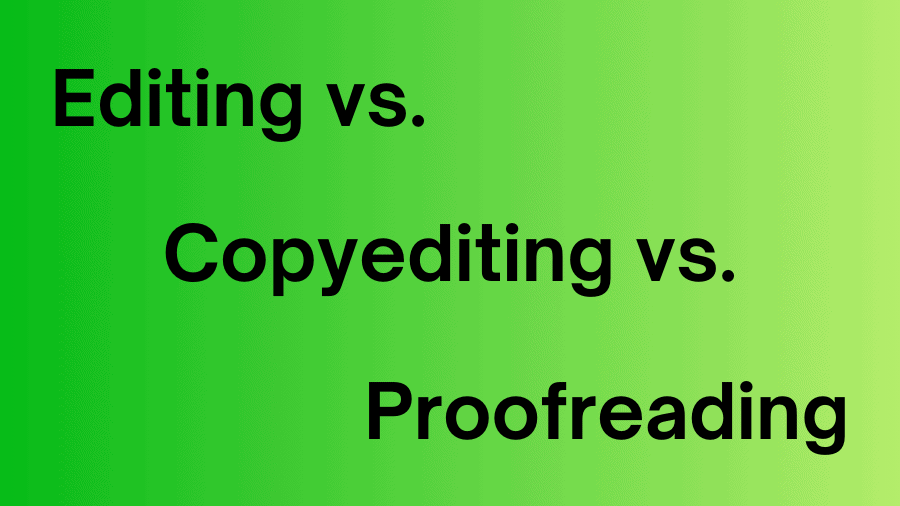
The words editing, copyediting, and proofreading commonly cause confusion because they’re related but not synonymous. Each is a distinct and vital stage in the editorial process.
Note: The term editing typically refers to developmental editing—the first step in the editorial procedure.
To better understand these concepts, let’s see when each stage is performed.
The Editorial Process
The editorial process consists of four stages:
- Developmental editing
- Line editing
- Copyediting
- Proofreading
Developmental editing considers the piece of writing as a whole and improves the content and overall structure. It involves adding, deleting, and reorganizing large sections of text.
Line editing seeks to refine a document to boost readability and flow. It makes sure the language is effective and suits the target audience.
We don’t hear about line editing as much as the other editorial steps because it’s sometimes performed with developmental editing or copyediting.
Copyediting deals with the five c’s—correctness, clarity, concision, consistency, and comprehensiveness—as we know. 😊 It also deals with everything proofreaders take into account.
Proofreading is the last stage in the editorial process. Proofreaders aim to catch and correct any remaining mistakes with grammar, capitalization, punctuation, spelling, and formatting.
Both proofreaders and copy editors focus on the finer elements in a document and ensure the writing follows the proper style guide (e.g., The Chicago Manual of Style).
However, copyediting has a broader scope.
I wrote a post about copyediting vs. proofreading if you’d like an in-depth comparison of these two editorial steps.
What’s the Difference between Copywriting and Content Writing?
Many people wonder how copywriting is different from content writing. With writing in the name, they can’t be too dissimilar, right?

The main difference between the two is their primary goal.
The overriding objective of copywriting is to engage and persuade.
And the principal purpose of content writing is to educate or entertain.
Copywriting wants someone to act; content writing wants to inform someone.
Another difference is that copywriting usually involves short-form content, while content writing leans toward long-form content.
However, as you may suspect, these two forms of writing overlap.
For example, copywriting also educates and entertains. It’s meant to inform readers about products or services so they understand the benefits obtained from buying them. Copywriting also needs to be entertaining to keep people’s attention.
And content writing is meant to be engaging; however, it generally isn’t persuasive.
How Do Copywriting and Proofreading Differ?
Copywriting is crafting persuasive and interesting prose, usually designed to encourage readers to take a particular action (e.g., buy something, subscribe, donate). Proofreading is correcting a text for mistakes to make it more polished and professional.
The main difference between copywriting and proofreading is that copywriting is writing copy, whereas proofreading is correcting it.

Proofreading is relatively straightforward. Proofreaders find and fix punctuation, spelling, grammar, capitalization, and formatting errors.
They also look for omitted, repeated, and misused words.
Finally, like copy editors, proofreaders ensure their corrections conform to the right style guide.
Copywriting is a bit more nuanced and subjective than proofreading.
Here’s a quote from Goodreads that will give you a better understanding of a copywriter’s goals as they craft content:
“The 4 E’s of Copywriting. Engaging: Is the content compelling and of interest to the reader? Educational: Is the content teaching the reader something relevant to your product or service? Entertaining: Would the reader enjoy reading your content? Emotional: Would your content stir up emotions inside your reader?”
– Raymond Fong, author of Growth Hacking
If you’d like to learn more about how these topics differ, please read my article about copywriting vs. proofreading.
Frequently Asked Questions
Does copyediting pay well?
Whether copyediting pays well is subjective. Let’s look at a rates chart published by the Editorial Freelancers Association (EFA). Please note that these rates are not suggestions from the EFA; they are based on data from a survey given to EFA members.
2024 Median Copyediting Rates from the EFA
| Type of Text | Per Word | Per Hour | Per Page |
Pages/ Hr |
|---|---|---|---|---|
| Academic, humanities (student) | 3.0¢–5.0¢ | $40.00–$50.00 | $7.50–$12.50 | 4.0–8.0 |
| Academic, humanities (faculty, publication) | 3.5¢–5.0¢ | $45.00–$60.00 | $8.75–$12.50 | 4.0–8.0 |
| Academic, STEM (student) | 3.6¢–5.5¢ | $45.00–$60.00 | $8.88–$13.75 | 4.0–7.3 |
| Academic, STEM (faculty, publication) | 3.8¢–6.0¢ | $50.00–$60.00 | $9.50–$15.00 | 4.0–7.0 |
| Academic, other | 3.5¢–5.0¢ | $50.00–$60.00 | $8.75–$12.50 | 4.0–8.0 |
| Business/ marketing |
3.0¢–5.0¢ | $50.00–$60.00 | $7.50–$12.50 | 5.0–10.0 |
| Fiction | 2.0¢–3.0¢ | $40.00–$50.00 | $5.00–$7.50 | 5.0–10.0 |
| Graphic novels | 3.0¢–3.5¢ | $38.00–$55.00 | $7.50–$8.75 | 9.5–15.0 |
| Legal | 4.0¢–14.8¢ | $50.00–$65.00 | $10.00–$36.88 | 5.0–7.0 |
| Medical | 4.9¢–5.0¢ | $50.00–$65.00 | $12.33–$12.50 | 3.0–6.0 |
| Medicolegal | 6.0¢–8.0¢ | $40.00–$50.00 | $15.00–$20.00 | 5.0–10.0 |
| Memoirs | 2.5¢–3.5¢ | $45.00–$55.00 | $6.25–$8.75 | 5.0–10.0 |
| Nonfiction | 3.0¢–4.0¢ | $45.00–$60.00 | $7.50–$10.00 | 5.0–8.0 |
| Technical | 4.0¢–6.0¢ | $50.00–$60.00 | $10.00–$15.00 | 4.0–7.8 |
| Other | 4.0¢–6.0¢ | $50.00–$62.50 | $10.00–$15.00 | 5.0–7.0 |
Source: The EFA
Is copywriting better than proofreading?
Copywriting is not better than proofreading, and proofreading is not better than copywriting. They’re simply two different processes. Concerning pay, copywriters typically earn more than proofreaders.
Whether copywriting or proofreading would be a better job for you depends on your skill set, interests, and financial requirements.
I hope this post has cleared up any confusion and given you new insights into what copyediting and copywriting entail.
Best wishes to you!
“Shine your light and make a positive impact on the world; there is nothing so honorable as helping improve the lives of others.”
– Roy T. Bennett
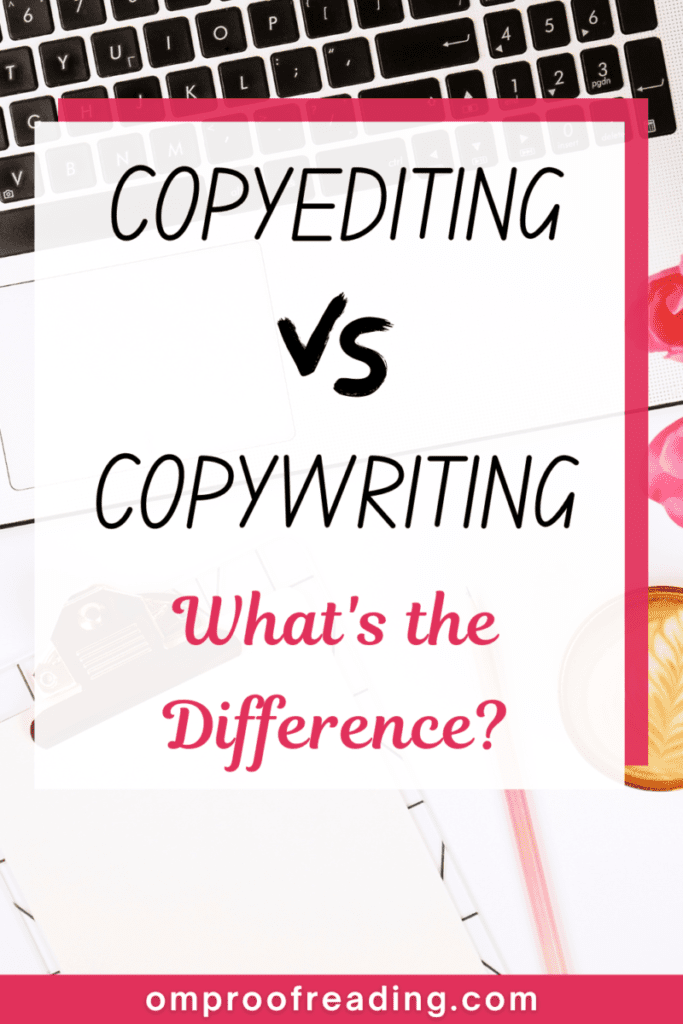
Recent Posts
Punctuation is important because it enables us to communicate our message clearly and effectively. Without punctuation, we wouldn’t understand how units of a sentence relate to one another or how...
Although you're probably somewhat familiar with adverbs, you may be unaware of sentence adverbs. As a trained proofreader who has studied the parts of speech, I can help you understand this unique...
